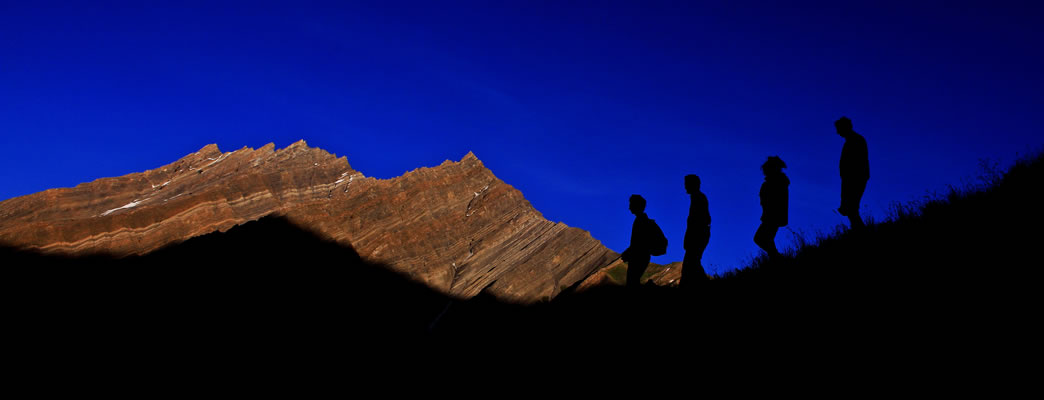Overview
Pin Valley National Park
The valley of the Pin river is a protected National Park. The park encompasses an area of 675 sq kms and a buffer zone of 1150 sq kms. The Bara Shigri glacier forms part of the northern boundary of the park, which continues along the Hundungma ridge separating the main Spiti valley and Pin valley watersheds. The eastern boundary runs along the Killung nalla to join the Pin river near Larang La. The buffer zone (which is mostly on the eastern side) extends northwards upto the Spiti river and eastwards upto where the Tipta nalla meets the Spiti River. The minimum altitude is 3600m and the maximum altitude is 6632m.
The area is home to the Siberian Ibex (Capra ibex sibirica), the Snow Leopard (Panthera uncia), the Red Fox (Vulpes vulpes), Pika (Ochotana roylei) and Weasels (Mustela spp). The avifauna of the region includes the Lammergeier (Gypaetus barbatus), Himalayan Griffon (Gyps himalayensis), Golden eagle (Aquia chryaetos), Chukar partridge (Alectronics Chukor), Himalayan Snow Cock ( Tetraogallus himalayensis) and a host of Rosefinches (Corpodacus spp).
The Ibex, Capra ibex sibirica, is well adapted to the extreme environment, making it a fascinating study. A thick winter coat helps protect it against the intense cold whereas the summer coat is a thinner dark brown. Ibex goats spend most of the winter on steep cliffs that are highly prone to avalanches.
Kibber Wildlife Sanctuary
The Kibber Wildlife sanctuary is located on the left bank of the Spiti river and is linked with road via Lhalung, Langza & Kibber village. It is spread over an area of about 1400 sq km and is segregated in an outer buffer zone and an inner "protected area". It is the only sanctuary in the country which is situated in a cold desert area.
There are about 13 villages situated outside the periphery of the sanctuary. Only two households in one village Kibber exist inside the sanctuary area. There are three monasteries - Kye, Tangyud and Dhankar on the periphery of the protected area. The buffer zone does contain a few dwellings called "dogris" and a grazing reserve for livestock.
Conditions are generally cold and dry since it is a high altitude desert. For a dry land, the flora that is found is quite amazing. Plants and flowers are mainly used for livestock feed, traditional medicinal value and cosmetics.
Being a high altitude sanctuary, KWS is home to a variety of rare animals like the Ibex, blue sheep, red fox, Tibetan woolly hare, Himalayan Wolf (canis lupus laniger), lynx, pika, Tibetan wild ass - and the majestic but elusive snow leopard. A sighting of the snow leopard is very rare partly due to its elusive nature and part due to its dwindling number. But signs of its presence - killed prey, pug marks, scat and spray - are omnipresent.
The birds that are found here include the Himalayan snow cock, the Himalayan billed chough, the bearded eagle and griffons. The sanctuary also offers a great view of the region's peaks - Chau-cahu Khanamo & Chau-chau Khang Nilda.
"In today's explored world, it is indeed a rare event to discover a new species of mammal, especially that of a large carnivore. When this happens to be a wolf- the most studied of the Carnivores- the discovery is as thrilling as it is surprising. The Indian wolves, which were in plain sight, yet whose origins were elusive to scientists, are the source of this surprise to wolf biologists throughout the world."
....Yadvendra Jhalla and D. Sharma.
The Himalayan wolf found in the Spiti valley of Himachal Pradesh is dated back to over 8,00,000 years and is the oldest surviving species of wolves in the world. Spiti provides a great opportunity of exploration and chance to witness one of the oldest surviving living species in this breathless vastness. The Himalayan Wolf (Canis lupus chanco), locally called Shanku has its prime habitat inside the Kibber Wildlife Sanctuary and as mentioned has been living here for the past 8,00,000 years. Having lived in this region for so long, Spiti definitely belongs to the wolf before anyone else can lay claim over it. This experience is an opportunity to venture into the habitats of this extremely evolved predator to get a glimpse of the relationships that it shares with its surrounding locales. The larger goal is to be able to ensure that the strained human wildlife relationship is pacified and the locals shown the value in trying to conserve this critically endangered species of wildlife, so unique to this part of the world.

